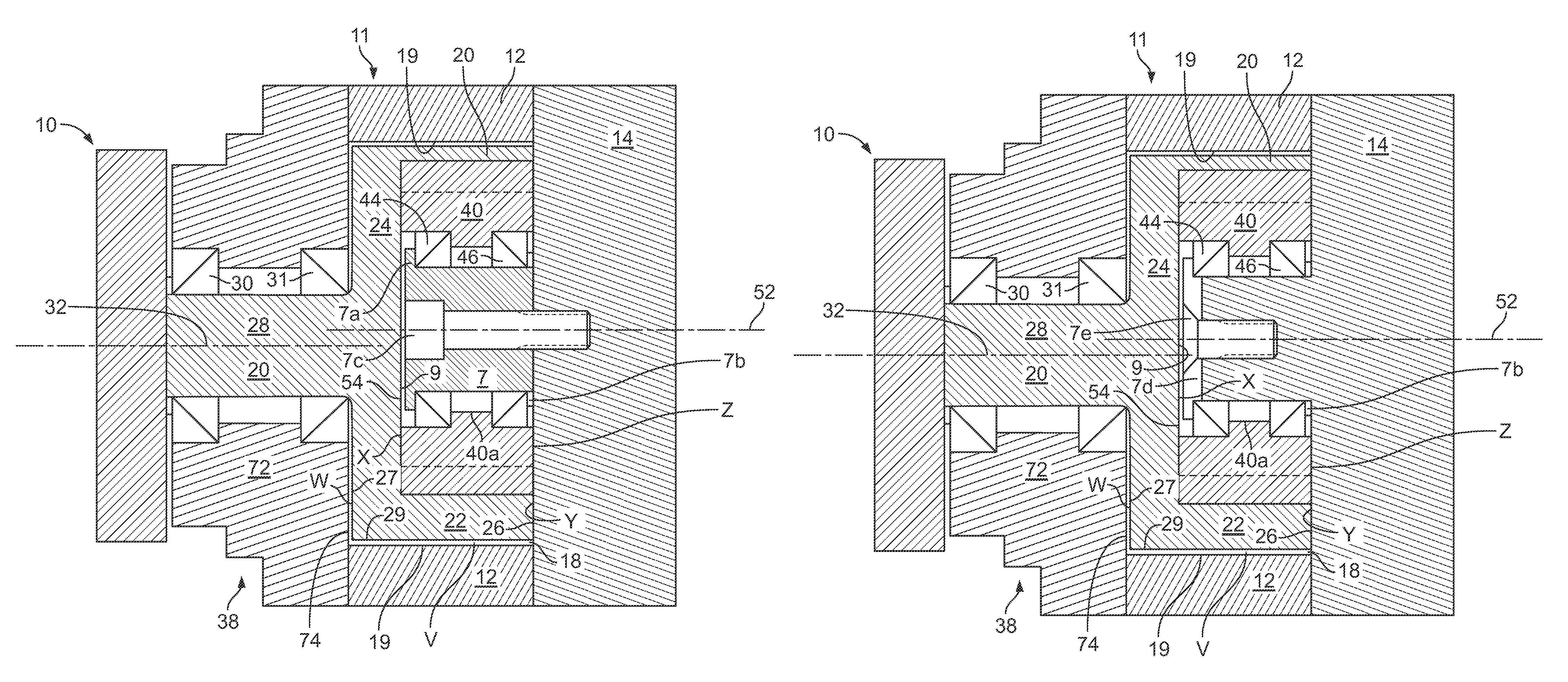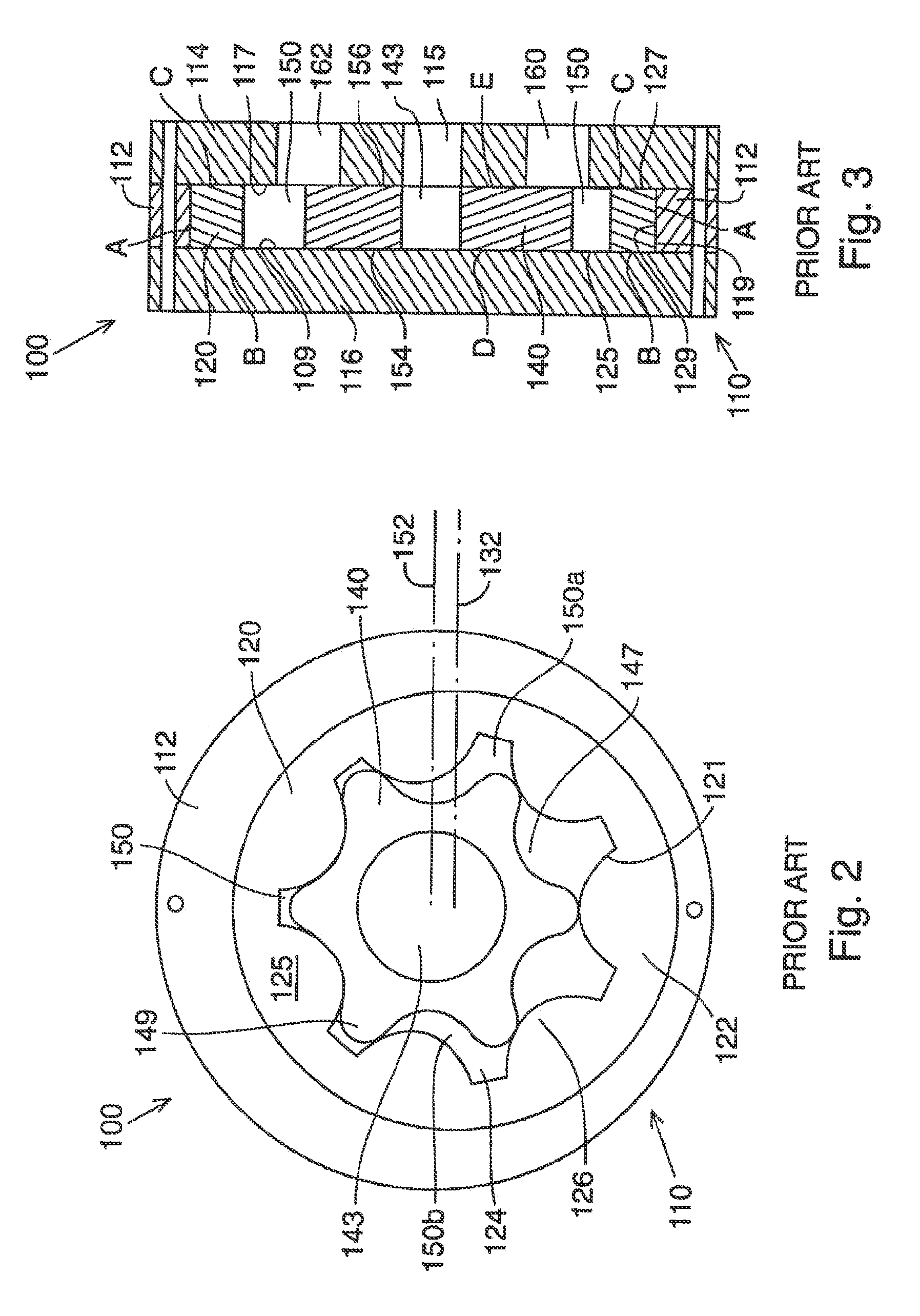Fluid energy transfer device with improved bearing assemblies
a technology of energy transfer device and bearing assembly, which is applied in the direction of liquid fuel engine, combination engine, machine/engine, etc., can solve the problems of high cost, high cost, and high cost, and achieve the effect of minimizing by-pass leakage, and minimizing operating fluid shear for
- Summary
- Abstract
- Description
- Claims
- Application Information
AI Technical Summary
Benefits of technology
Problems solved by technology
Method used
Image
Examples
Embodiment Construction
[0053]With reference to the drawings and initially FIGS. 1-3, a conventional trochoidal element, fluid displacement device (pump or engine) of which a species is a gerotor is generally denoted as device 100 and includes a housing 110 with a cylindrical portion 112 having a large axial cylindrical bore 118 typically closed at opposite ends in any suitable manner, such as by removable static end plates 114 and 116 to form a housing cavity substantially identical with cylindrical housing bore 118.
[0054]An outer rotor 120 freely and rotatably mates with the housing cavity (axial bore 118). That is, the outer peripheral surface 129 and opposite end faces (surfaces) 125 and 127 of outer rotor 120 are in substantially fluid-tight engagement with the inner end faces (surfaces) 109, 117 and peripheral radial inner surface 119 which define the housing cavity. The outer rotor element 120 is of known construction and includes a radial portion 122 with an axial bore 128 provided with a female ge...
PUM
 Login to View More
Login to View More Abstract
Description
Claims
Application Information
 Login to View More
Login to View More - R&D
- Intellectual Property
- Life Sciences
- Materials
- Tech Scout
- Unparalleled Data Quality
- Higher Quality Content
- 60% Fewer Hallucinations
Browse by: Latest US Patents, China's latest patents, Technical Efficacy Thesaurus, Application Domain, Technology Topic, Popular Technical Reports.
© 2025 PatSnap. All rights reserved.Legal|Privacy policy|Modern Slavery Act Transparency Statement|Sitemap|About US| Contact US: help@patsnap.com



